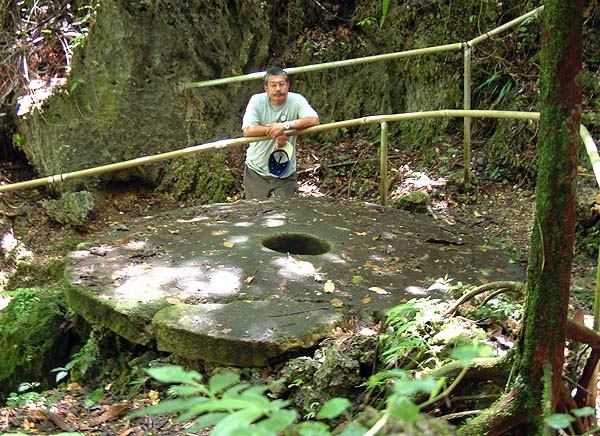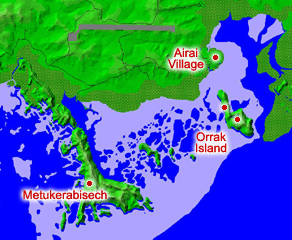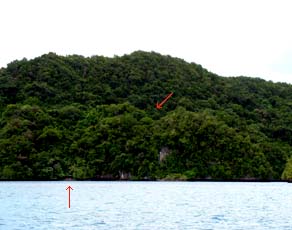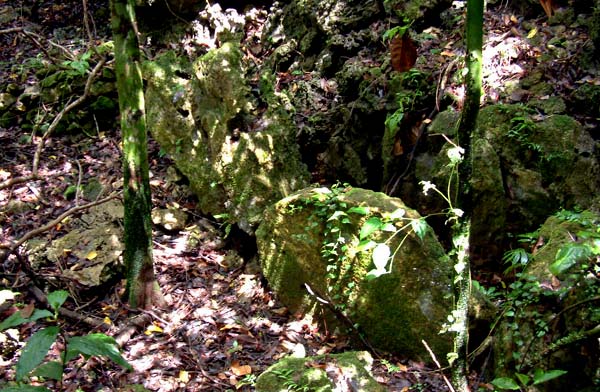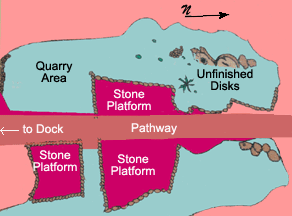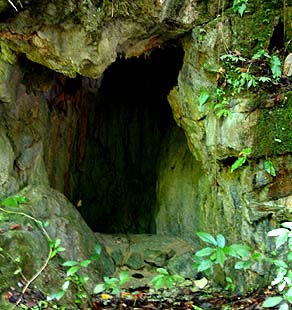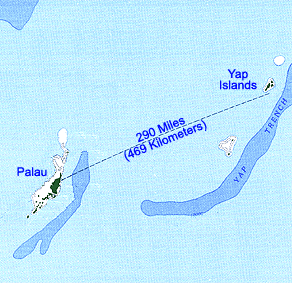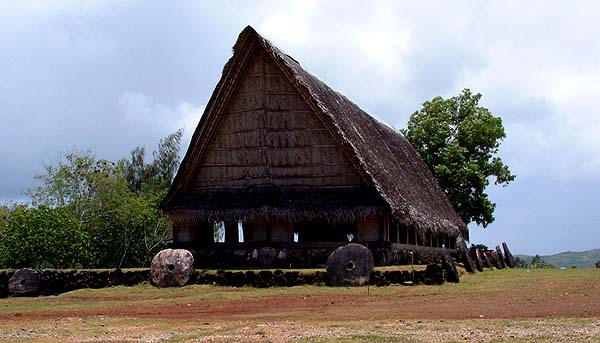 |
 |
 |
 |
||||
|
|
|
|
|
|
|
|
|
|
|
|||||||
“The Yapese came to Palau to quarry stone money from the Rock Islands— to ‘mint their coins,’ so to speak” Johnson relates. Two Yapese quarry sites exist in Airai State, one on the island just off Airai Village. While these sites do not specifically represent Palauan culture, there presence attests to one legacy of Palau: as the source of these carved stone objects, and of the limited interaction between the Palauans and the Yapese who came to carve these.
|
||
| |
||
|
“The voyages between Yap and Palau were risky. People lost their lives. And when they came here, they worked using crude, primitive tools made of shells, or whatever they could find, to quarry and carve out these huge disks—round, wheel-like disks with a hole in the middle—as their money. "And then they would transport them back to Yap in their canoes, or on bamboo rafts towed by the canoes. It was very risky and lot of them lost their lives."
|
|
|
|
“That currency is part of their social order there," Kathy explains. “Yap has a caste system, and the people who came here from my understanding weren’t the highest caste. And I think that accounted for them to keeping to themselves while they were here. “Yap is a very stratified society” Tina adds, “but when the Yapese came, they were connected with Koror, some with Airai, and some in other areas. There would be a connection between the high chief of a village here, and a high chief of a ranking village in Yap. They acquired permission to come to the Rock Islands. Our relationship with Yap is very close. And we feel very comfortable with them."
|
|
|
|
|
“Only Koror and Airai had the Rock Islands where the rocks are that are good for stone money,” Kathy points out. “You don’t quarry stone money way up in Babeldaob. Quarry sites are only in Koror and Airai, close to the traditional settlements and villages that were in existence then. “When the quarrying was done, the tools were shells. They used clam-shell adzes to carve. There was some burning, and then some chipping. That was really hard, and it took a long time. Then the disk was ferried on a bamboo raft."
|
||
| |
||
|
“It was hard living up in those ridges. Carving those stones took time, and you didn’t bring that much with you. We require so much now, you know. But the Yapese sufficed with staying under a cave, with a hearth for warmth and just a little space to rest. "And their food was not extravagant—basic taro, fish, coconut, and whatever they could get from the sea, or grow in the area. I’m sure it’s not like people nowadays, when we sit down for lunch. It’s like a feast, with so many different foods. For them it was just basic staples, enough to keep them going."
|
|
|
|
"I am sure they would come over to the village to get food, and also the villagers would go visit them, taking taro and whatever they could bring. But they kept to themselves." “There are quarry sites near the shore," Walter points to Orrak island, just off Airai's waterfront. "And more up the ridge, maybe close to 30 meters above sea level. I don’t know if it was the best quarry area up there, and some they just finished and left them up there. That is kind of a rugged island for trying to bring them down. "But it is now probably the best quarry site where you can still see the remains and the platforms and the living areas where they were."
|
|
|
|
|
“When I asked Rurecherudel,”
Johnson relates, “he said the Yapese would work
there for a few days and go back to the Airai Village, help the people
plant taro and coconut and then they would bring some food over and
they would work for a few days and then come back. And in fact one of
the Yapese boys, 5 or 6 years old, was adopted by a Palauan family,
because he would go with his father everyday. And the Palauan family
said ‘hey this is a rough life for this kid you know. You can
leave the kid with us,’ and eventually the kid became a Palauan,
lived and died as a Palauan in Palau. So there was a lot of interaction."
|
||
|
|
||
|
“I think of all the Micronesians, the Yapese are closet to Palau both historically and culturally," Johnson concludes. "I got to know Yap during my professional years as an attorney. I got to live there and work with the lawmakers, the chiefs. And I learned to like them a lot. Then recently I went back, and got to know the people there much better, and I respect them a lot."
|
||
|
|
||
We will learn about more storied places in Airai later. But first, we turn our attention to the sea.
|
||
|
|
||
|
|
|
|
|
|

|
| Airai Home | Map Library | Site Map | Pacific Worlds Home |
|
|
|
|

|
|
|
|||
| Copyright 2003 Pacific Worlds & Associates • Usage Policy • Webmaster |
|||
